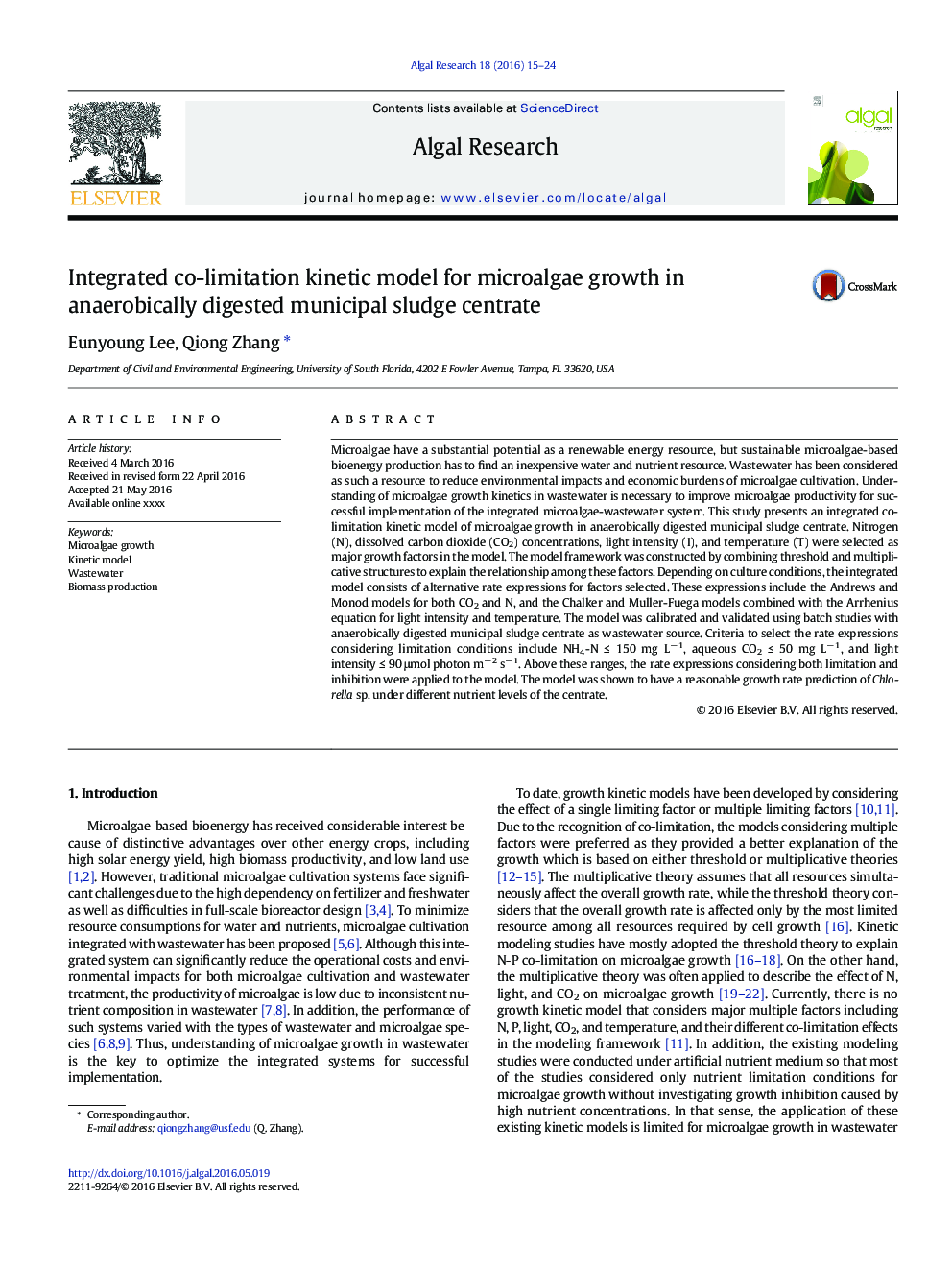| Article ID | Journal | Published Year | Pages | File Type |
|---|---|---|---|---|
| 8086662 | Algal Research | 2016 | 10 Pages |
Abstract
Microalgae have a substantial potential as a renewable energy resource, but sustainable microalgae-based bioenergy production has to find an inexpensive water and nutrient resource. Wastewater has been considered as such a resource to reduce environmental impacts and economic burdens of microalgae cultivation. Understanding of microalgae growth kinetics in wastewater is necessary to improve microalgae productivity for successful implementation of the integrated microalgae-wastewater system. This study presents an integrated co-limitation kinetic model of microalgae growth in anaerobically digested municipal sludge centrate. Nitrogen (N), dissolved carbon dioxide (CO2) concentrations, light intensity (I), and temperature (T) were selected as major growth factors in the model. The model framework was constructed by combining threshold and multiplicative structures to explain the relationship among these factors. Depending on culture conditions, the integrated model consists of alternative rate expressions for factors selected. These expressions include the Andrews and Monod models for both CO2 and N, and the Chalker and Muller-Fuega models combined with the Arrhenius equation for light intensity and temperature. The model was calibrated and validated using batch studies with anaerobically digested municipal sludge centrate as wastewater source. Criteria to select the rate expressions considering limitation conditions include NH4-N â¤Â 150 mg Lâ 1, aqueous CO2 â¤Â 50 mg Lâ 1, and light intensity â¤Â 90 μmol photon mâ 2 sâ 1. Above these ranges, the rate expressions considering both limitation and inhibition were applied to the model. The model was shown to have a reasonable growth rate prediction of Chlorella sp. under different nutrient levels of the centrate.
Related Topics
Physical Sciences and Engineering
Energy
Renewable Energy, Sustainability and the Environment
Authors
Eunyoung Lee, Qiong Zhang,
